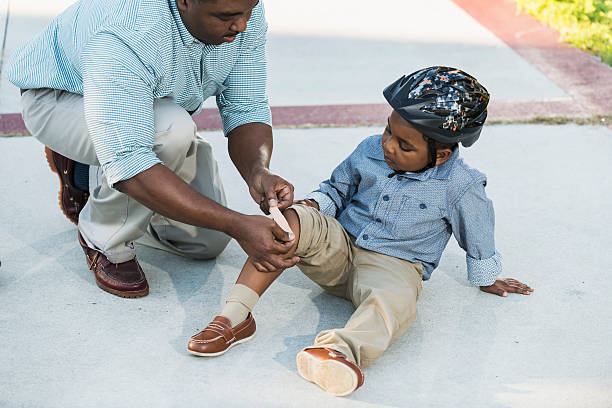(ThyBlackMan.com) Knowing how to dress a wound is an important life skill to have, and one of the most basic first-aid procedures there is. Knowing how to dress a wound will serve you well if an emergency occurs, whether it’s a little cut in the home or a more serious laceration that simply requires a dressing until medical help arrives.
Although following these instructions provided by Express Pharmacy, a UK Online Pharmacy to avoid the danger of infection or further harm is essential, it is rather easy to learn. Here’s how to dress a wound properly, regardless of size or position.
1) Assess The Bleeding
The necessity of knowing the risks connected with coming into direct contact with someone else’s blood, such as the possibility of spreading illnesses, should be emphasized. If at all feasible, use precautions and wear personal protective equipment, such as gloves or a face mask, to safeguard yourself as much as possible.
If the animal has been shot in an extremity, immediately assess how much bleeding there is – if the wound is gushing blood, you may need to contact emergency services. Call the emergency services if there is bright red or squirting blood, a deep puncture wound on the arm above the elbow or on the leg above the knee, or if the puncture wound is on the head, chest, neck, abdomen, pelvis, or back and is more than an inch deep.

2) Get The Right Supplies
Before you start dressing the wound, make sure you have the following items on a clean and sanitary surface:
- A pair of sterile gloves
- Gauze pads or rolled gauze
- Saline water
- A pair of scissors
- A non-stick pad
- Antibiotic ointment
- Tape or wrap*
*If you’re replacing a wound dressing for the first time, keep an eye on how and where it’s fastened to ensure that you can replicate the setup with your new one. It’s always a good idea to cut the tape or wrap before beginning the dressing if possible, making it simpler for you to apply.
3) Wash and Dry Your Hands
Do not put on a pair of freshly manufactured sterile gloves until your hands are completely clean and dry.
4) Remove the Old Dressing If There Is Any
If this is a dress change, first remove the old dressing with care. A little of the saline water can be used to assist in loosening any sticky areas, but avoid removing any surgical tape that may have been used to close the wound if present.
5) Clean The Wound
If there are foreign particles in the wound, such as broken glass or gravel, remove them using tweezers. Wipe the gauze pad with saline water (or running water) to moisten it, then cleanse the wound carefully – being careful to remove any visible blood or fluids from the region while doing so. Wash the surrounding skin as well to remove any dirt. This step may sting the raw tissue around the wound, but it is essential to prevent infection in the future.
6) Let The Wound To Dry
If you clean the wound after drying it, make sure to apply a bandage immediately after cleaning since putting a dressing on a wet wound may result in it coming off or separating fast.
7) Apply The New Dressing
To begin, apply the antibiotic ointment to the wound, followed by a new non-stick pad on top. If necessary, add extra gauze for cushioning here.
8) Secure The Dressing
Finally, you must secure the dressing using tape or wrap, depending on where the wound is located on the body. If you’re using a wrap, wrap it around the dressing so that it’s both comfortable and firm, but if you’re using tape, apply it to two or more of the pad’s edges to ensure that the sauce stays in place.
Staff Writer; Mark Jackson

















Leave a Reply